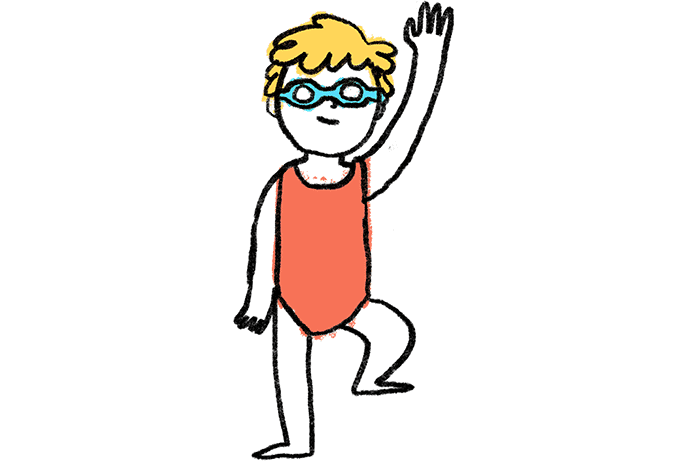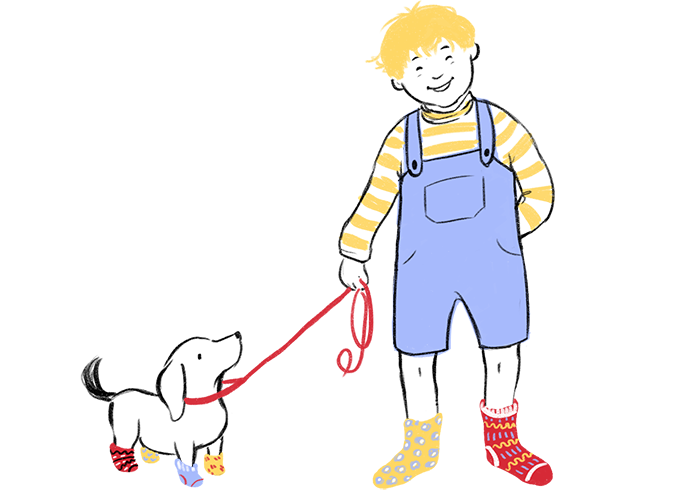Sex education – youngest level

Sex education for the youngest level is about laying the foundation for good sexual health, healthy communication, and healthy relationships.
We provide education about the body, emphasize body positivity, and use correct terminology for genitals. We discuss all types of families and the diversity of daily life. We focus on communication, friendship, respect, and affection.
Here you can find educational materials and icebreakers for sex education for the youngest level of primary schools and after-school programs.
Websites
Stop violence! All children should receive education on gender-based and sexual violence. It's important for their sexual health and safety. On the website Stop Violence, there is a collection of teaching materials suitable for each age group.
Body positivity for children is a website about body positivity suitable for the youngest and mid-level stages.
Girls Puberty is a website maintained by nurses containing various information related to sexual health.
Education
Talking to children about pornography - these guidelines offer advice for school and recreational staff and parents on how to discuss pornography with children at the youngest level.
My Amazing Body is a project that helps students strengthen their body image.
Group communication is a teaching idea that is useful for examining the interactions in the class/group. Good communication is extremely important and when it comes to sexual health, communication is everything. It's therefore beneficial to use every opportunity to enhance and support good communication.
Hello world - Friendship Knowing how to cultivate and maintain good relationships is an important skill. Discussing friendship with children and examining what characterizes a good friendship lays a precious foundation for all future relationships.
How does the body work? Is a text and slide package developed for preschool children but it is suitable for the youngest level.
Little Monsters and Body Parts is a workbook where students can learn about different body parts in a gender-neutral way while practicing counting.
My Body, Their Body is a coloring book for the youngest level.
Let's Assemble the Body is a project where students color, cut out, and assemble a body.
Monsters - right or wrong. A task where students mark whether statements about each monster are right or wrong.
Monsters - match. A task where students match descriptions to the correct monsters.
Feelings - Printable resource designed to strengthen children's emotional skills. Available in both Icelandic and English.
We Are All Different is a project that teaches students about head parts and human diversity.
Sex is a Funny Word
Sex is a Funny Word is a sex education book for children aged 7–10 years. It addresses children and families of all types, genders, and sexual orientations so that all children and all families should be able to see themselves in the book.
The book is in comic book format, following four children as they learn about gender and sex with respect, trust, pleasure, and justice as guiding principles.
The book is an important guide about the body, gender, and sexuality for children. It provides an essential foundation in sex education and also facilitates discussions between students and teachers, allowing everyone to express their views and experiences while learning about respect, boundaries, safety, and pleasure.
'The Wonder That Is Me' – sex education for the youngest level
This impressive sex education teaching material was created by Rut Ingvarsdóttir as part of her master's project in educational studies at the University of Akureyri’s Faculty of Education.
The material is divided into three parts: an academic paper, teaching instructions, and a sex education textbook for 5–8-year-old students, all of which can be found below.
Videos
Cartoons with LGBT+ themes - three short cartoons featuring LGBT+ protagonists. The cartoons can be icebreakers on LGBT+ issues, emotions, and love. In the adventure of Rosalind, there is also a break from stereotypes as the princess is strong, independent, and doesn't need outside help.
My Body Belongs to Me! Short cartoons that educate children about sexual abuse, stressing that it is never their fault and that it is beneficial to tell a trusted adult.
For the conversation with children to be as effective as possible, teachers need to be well-acquainted with the material to adapt it to the working method that suits each group of children best.
Children need ample space for reflection and questions, so they can express what they have learned and what they are thinking.
The Secret – Say no, speak out! - is a preventive education program about sexual abuse and children's rights. This is a cartoon that informs children about sexual violence and how to respond to such threats. Support material for teachers accompanies this educational content. It is published by the Right of the Child organization
*Always remember to prepare children well (give them a trigger warning) before discussing violence. Also, always have another adult with you who monitors the children's wellbeing: If a child seems to be feeling unwell, offer a conversation. If a child reports violence, the staff should inform the manager, and they will send a notification to Child Protection Services.
The Gender Unicorn and the Genderbread Person
Here are images with explanations of the terms sexual orientation, gender expression, gender identity, and sex characteristics.
The images are useful tools for teaching children about the differences in gender identity, gender expression, and who people are attracted to.

Good to know
A variety of teaching methods is recommended:
- Group work/presentations
- Use post-it notes, for instance, in brainstorming sessions.
- Slide presentations
- Videos / show videos / allow students to create videos
- Drawings - have students draw, embroider, craft or mold bodies from clay. Emphasize the diversity of bodies appearance.
- Have an idea box / question box
- Engage in games
- Work with dilemma scenarios
- Create plays, write songs, conduct interviews such as with parents or grandparents about love or heartbreak